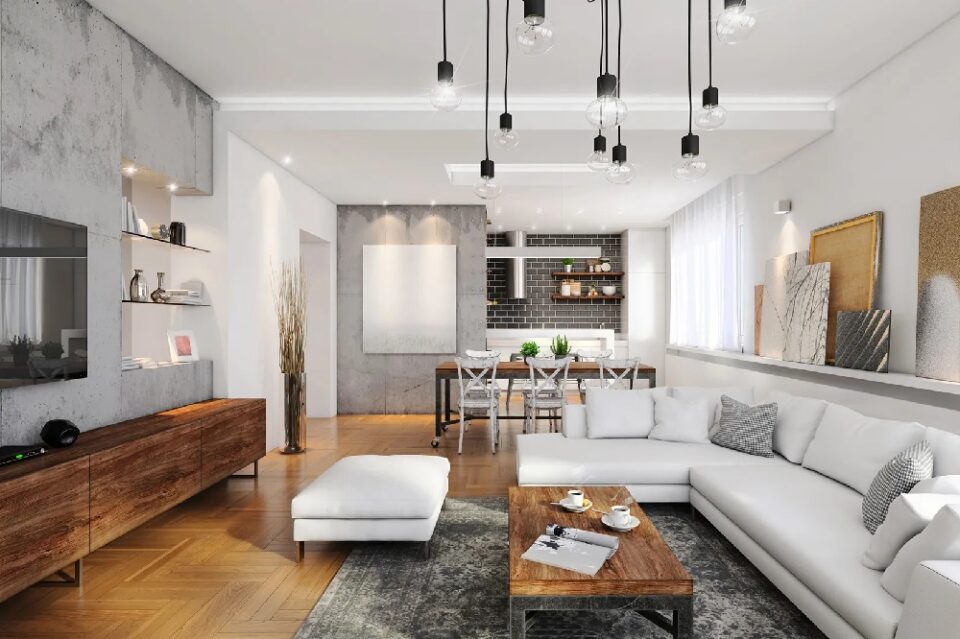Architectural lighting is a blend of art and science that enhances the beauty and functionality of any room. By carefully choosing different lighting styles and techniques, you can highlight key architectural features, define spaces, and set the mood. Here’s a guide to understanding various lighting styles and how to use them effectively.
Different lighting styles and their uses
Ambient lighting: also known as general lighting, this style provides overall illumination to ensure visibility and safety. Ambient lighting usually comes from ceiling fixtures, recessed lights, or wall-mounted fixtures. In spaces with notable architectural elements like high ceilings or wooden beams, ambient light should fill the room without overshadowing these features.
Task lighting: task lighting focuses on specific areas to aid activities like reading, cooking, or working. Desk lamps, under-cabinet lights, and pendant lights are common examples. For architectural features such as kitchen islands, task lighting can highlight the space’s function while adding style.
Accent lighting: accent lighting is used to draw attention to architectural features, artwork, or specific areas within a room. Track lights, wall sconces, and spotlights can accentuate textures like brick walls, woodwork, or decorative moldings.
Decorative lighting: while decorative lighting also serves functional purposes, its primary goal is to add a visual statement. Chandeliers, sculptural table lamps, and custom fixtures bring artistic flair to a space.
Enhancing architectural features
Ceilings and beams: cove lighting or uplighting can create a soft glow that emphasizes ceiling height and beams, adding drama to rooms.
Wall textures: wall sconces or track lights placed at strategic angles can enhance textures like exposed brick, stone, or stucco.
Staircases: integrated lighting along the steps or handrails makes staircases stand out as a design element while improving safety.
Windows and skylights: install lighting around windows or skylights to keep them visible and highlighted, even at night.
Niches and alcoves: use small, recessed lights to illuminate these spaces, creating a sense of depth and adding interest.
Practical tips for effective lighting
Layering: combine ambient, task, and accent lighting to create layers that can be adjusted to match different activities or moods.
Dimmers: dimmers offer flexibility by allowing you to control light intensity based on the time of day or occasion.
Leds: led lights are energy-efficient and versatile. They come in various temperatures and colors to complement different architectural features.
Smart lighting: integrate smart lighting systems to customize lighting schedules and intensity, enhancing both energy efficiency and convenience.
Conclusion
Architectural lighting plays a crucial role in elevating the aesthetic and functional appeal of any space. By understanding different lighting styles and layering techniques, you can highlight architectural features effectively and create an environment that is both inviting and functional. Whether you’re enhancing textured walls, staircases, or ceilings, a well-planned lighting scheme will bring out the unique character of your interior design.

